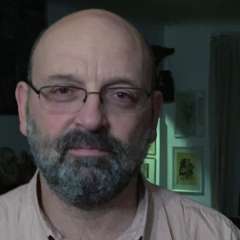Traditionally, a soprano has been approaching Salome, the title role in Richard Strauss' harrowing opera, as a descendant from Wagnerian characters. There are splendid examples – Birgit Nilsson, Leonie Rysanek, Hildegard Behrens – justifying this model. It’s not the only valid one though. When Sir Peter Hall first staged this very production in 1986, he selected Maria Ewing for the role, an unconventional singer but an accomplished actress. The production was a great success. There have also been spectacular, differently sounding, Salomes anchored in the Italian dramatic tradition.
The latest soprano to follow this lineage is Patricia Racette. After years of singing Mimì, Violetta and Cio-cio San, she has recently been adding the portrayal of the deranged biblical princess to her repertoire. The LA Opera revival is her third Salome this season, after interpreting the role at Pittsburgh and the Met. Racette has the dramatic vocal ability, her soaring voice able to cut through dense orchestral layers, and the mesmerizing power required of this role. Her stamina was outstanding. She remained in full command of her voice during the entire evening, becoming more confident as time passed. Her repeated requests for the head of Jochanaan were remarkably varied. She showed no fatigue whatsoever in the apotheotic final scene when, descending into madness, she talks to the severed head of the prophet and kisses his lips before Herod, appalled, orders her execution.
Racette didn’t portray Salome as an instable, spoiled adolescent, but as a mature woman who knows exactly what she wants. In this context, several silly gestures – constantly arranging her long hair, wiggling her toes, jumping on the edge of the cistern where Jochanaan is kept prisoner – didn’t make much sense. The soprano fearlessly dived into performing “The Dance of the Seven Veils” with the same courage and determination as everything else she attempted in this performance. The choreography is silly; surrounded and lifted by four bare breasted dancers while extras were watching placidly, Salome picks veils from here and there – one from the top of the prompter’s box – and dances more for the public than for Herod. There was only one problem with Racette’s truly remarkable interpretation. The role doesn’t always seem to be a natural fit for her. At times, her portrayal looks contrived, effortful. Hopefully, time will help her smooth the edges.
In Los Angeles, she was surrounded by a great supporting cast. Veteran tenor Allan Glassman was very credible in depicting Herod, the tetrarch torn between lust for his stepdaughter and fear of changes to come. He was at his best when describing to Salome all she could get if she gives up her foolish demand. When he piercingly uttered the last words of the opera – "Man töte dieses Weib" – he sent shrills down every listener's spine. As Herodias, his wife, Gabriele Schnaut relied on her long Wagnerian experience to portray a woman who was more of a sinister onlooker than a scheming politician fighting to preserve her privileges.
Jochanaan was interpreted by the Icelandic baritone Tomás Tómasson. Owner of a booming voice, he forcefully depicted the inner conviction and the froideur associated with the role. The young Issachah Savage sung with steely nuances the short role of captain Narraboth. He didn't really convey the dreamy side of the character but he proved that he might soon turn into a reputable heldentenor. In even smaller roles, Nicholas Brownlee as the First Soldier, Kihun Yoon as the First Nazarene or the five interpreters of the dissonantly quarreling Jews didn't have the chance to show too much but they fulfilled what was asked from them, musically and dramatically.
As revived by David Paul, Sir Peter Hall's original production, with sets by John Bury, placing a large, dominant cistern on the side of the stage, aged fairly well. Sara Jean Tosetti's costumes had the atemporal quality of the Symbolist representations of Salomé as painted by Gustave Moreau. Their opulence might have been a little over the top.
I left for last mentioning how much this performance owed to the instrumentalists in the pit. Arguably, the orchestra is the main character in Strauss' opera and that is exactly what the ensemble, lead by James Conlon, proved to be. Never covering the voices, the LA Opera Orchestra made palpable the score’s chromatic colors, tonal ambiguities, and the threatening dissonances first heard in 1905, years before Stravinsky’s Firebird.
James Conlon proved again a wonderfully versatile artist. It’s a shame that we don’t hear him as often nowadays guest conducting regular concert fare.




